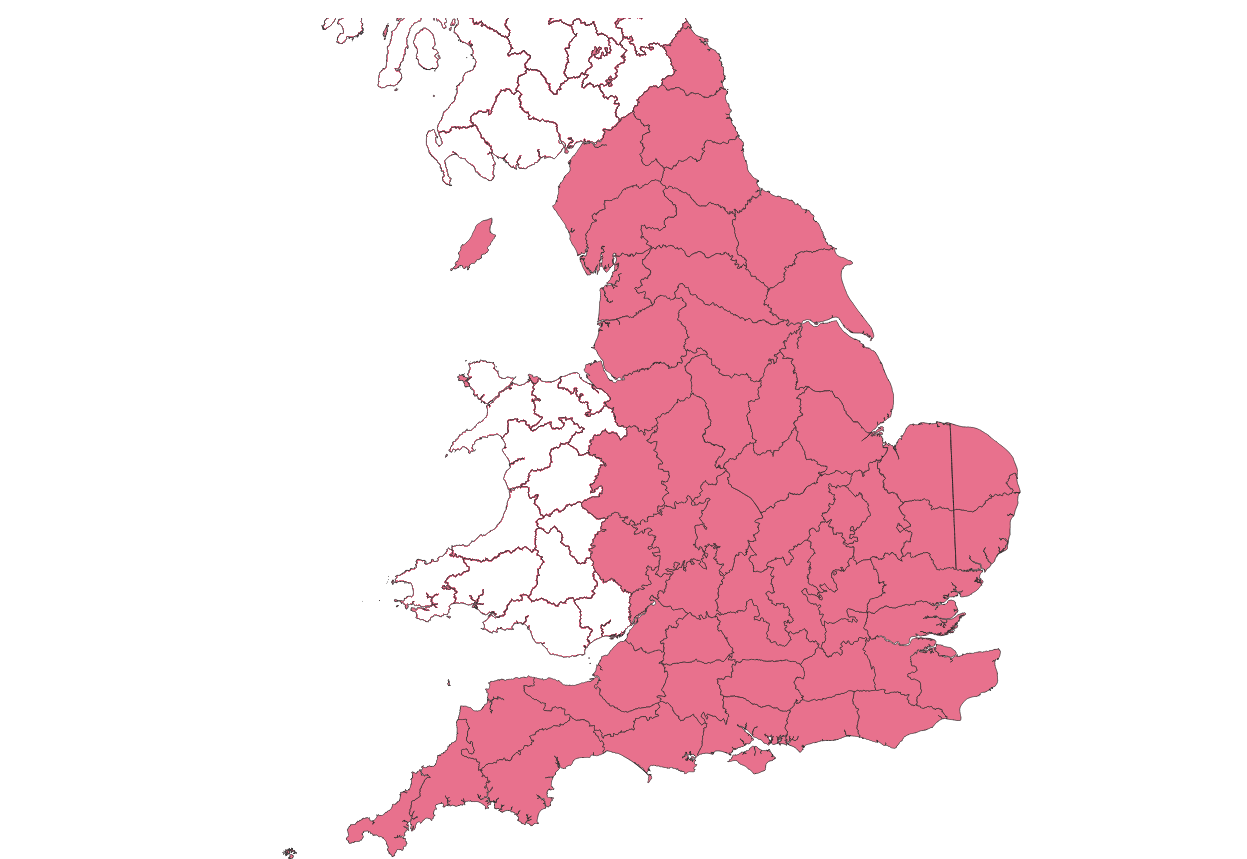Image

Vice-counties in England
The following is a message from Matt Wainhouse, Natural England’s Fungi & Lichen Senior Specialist on Local Nature Recovery Strategies in England on including lichens and other fungi. This has been very patchy so far and if you can help your local ‘responsible authority’, please do and/or contact the Neil at conservationofficer@britishlichensociety.org.uk and he will help where he can. Janet at records@britishlichensociety.org.uk can also supply up to date lichen data.
Matt Wainhouse:
Local Nature Recovery Strategies are a new, England-wide system of spatial strategies that will establish priorities and map specific actions for recovering habitats and species and providing wider environmental benefits. Each strategy is locally led by an appointed ‘responsible authority’ (see Local nature recovery strategies: areas and responsible authorities - GOV.UK (www.gov.uk)) and developed collaboratively with input from a wide range of local people, organisations, and communities. Anyone who can play a part in recovering nature and the wider environment in their local area could be involved in preparing a strategy.
Local Nature Recovery Strategies are intended to guide where the public, private, and voluntary sectors focus their nature recovery efforts for greater collective impact. They will determine where and how conservation funding and resource will be targeted for the foreseeable future and they will form the core planning component of the national Nature Recovery Network.
The strategies are currently undergoing consultation. Fungi, including lichenised fungi, have been poorly represented, if at all, in almost all strategies. Two of the main reasons cited for this by the responsible authorities is that they are unsure where to find information and resources and that they do not have knowledge within their teams. Having spoken with the Conservation Committees of the British Mycological Society and the British Lichen Society, consultation with local field mycologists and lichenologists has been minimal.
The exclusion of fungi from these strategies is extremely problematic. Without representation in these strategies, fungi will struggle to compete for the funding and resources that their conservation needs. There is also a risk that actions intended to support other species or habitats may be damaging to fungi, for example tree-planting in grasslands rich in waxcaps, or scrub-development around lichen-rich trees. It will similarly provide a policy-backed position at times when the interests of fungi need to be protected against other damaging actions from development or agriculture.
Fortunately there is still time to influence the content of Local Nature Recovery Strategies. Natural England have requested that the Strategies must have better representation of fungi. This now presents a real opportunity to get fungi and lichen recognised in these influential conservation strategies. I am compiling a library of resources which the responsible authorities will be able to draw. However, it is clear that they really need the help and support of local mycologists and lichenologists as the people who know better than anyone what the conservation priorities should be, whether that’s species, assemblages, habitats or specific sites. As such, we’ve advised that the responsible authorities actively consult with VC leads (lichen/BLS) and group leaders (fungi/BMS), but whether this happens and to what degree will vary between authorities. I therefore strongly encourage local leads to contact their responsible authorities directly and engage with them positively to make sure fungi and lichen are properly accounted for in their plans. Contact emails for the responsible authorities can be found at: Local nature recovery strategies: responsible authorities - GOV.UK (www.gov.uk).
Finally, to reiterate just how much of an opportunity the Local Nature Recovery Strategies could be for the conservation of fungi and lichen, but it does need our collective effort.
A PDF of the LNRS guidance for species is also attached
Neil Sanderson & Matt Wainhouse